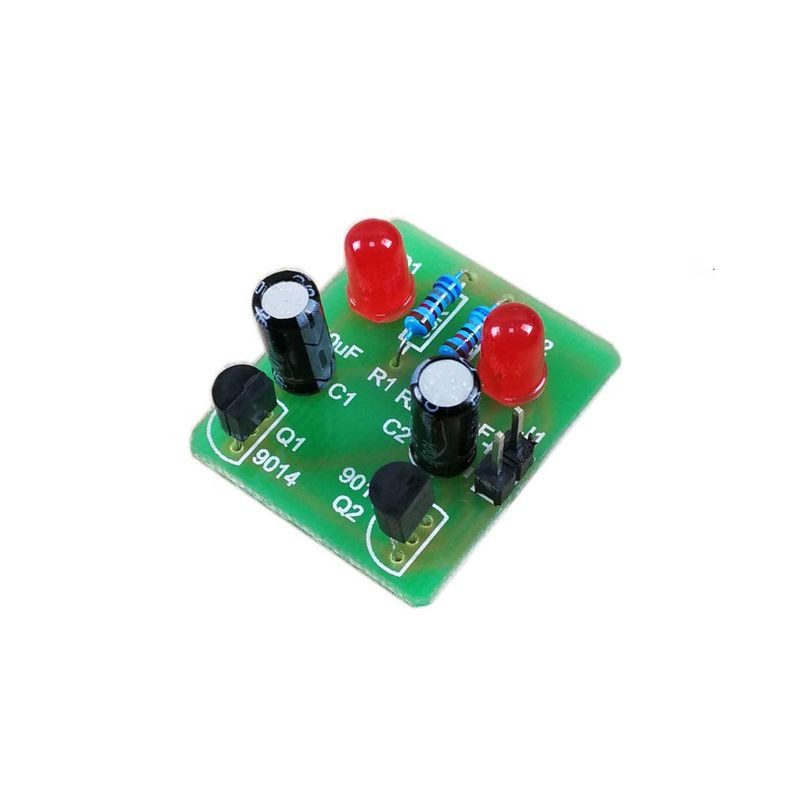


location_on 4131 Fraser St. Vancouver BC Get Directions
phone 604-875-1993 Call us
access_time Hours
| Monday - Friday | 9AM - 5:30PM |
| Saturday - Sunday & Holidays | Closed | See Holiday Hours |








Working voltage: DC2V - 15V
Board size: 23 x 27mm
The circuit is a typical self-excited multi-resonance circuit, the circuit suite is simple, easy to understand, interesting, rich theoretical knowledge, especially suitable for beginners to assemble and use. The circuit is provided with explanatory information.
How it works: When the power is switched on, two transistors compete for the lead, but because of the differences in components, only one transistor is the first to turn on. If VT1 is the first to turn on, then VT1 collector voltage drops, LED 1 is lit, the left end of capacitor C2 is close to zero voltage, because the voltage at both ends of capacitor can not mutate, so VT2 base is pulled to near zero voltage, so that VT2 cut off, LED 2 is not bright. As the power supply charges the resistor R3 to C2, the base voltage of Q2 rises gradually. When the voltage exceeds 0.6 V, VT2 changes from cut-off state to on state, collector voltage drops, and LED 2 is lit. At the same time, the decrease of collector voltage of VT2 makes the base voltage of VT1 jump down, VT1 changes from on to off, and LED 1 goes out. In this cycle, the two triodes turn on and off in turn, and the two LEDs circulate continuously. Changing the resistance or capacitance of R2 or R3 can change the speed of LED flicker.
